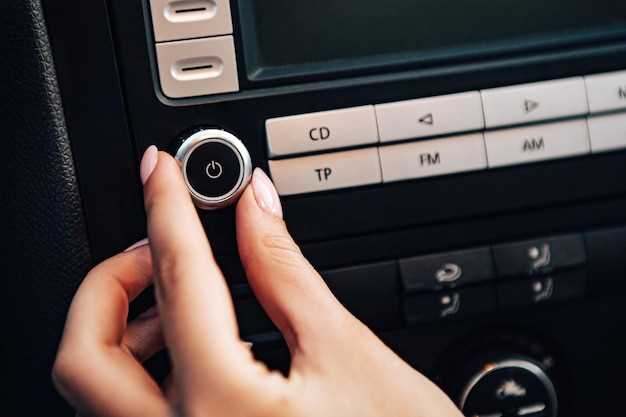
Understanding the functionality of car relays and switches is crucial for any vehicle owner or enthusiast. These components play a significant role in controlling various electrical systems, from headlights to fuel pumps. When they malfunction, it can lead to unpredictable issues, making it essential to know how to test and verify their operational status.
Testing relays and switches involves a systematic approach that ensures each part functions correctly. Many car owners may encounter symptoms like flickering lights or unresponsive electrical systems, indicating a potential problem with these components. By employing simple tools such as a multimeter and following a structured testing process, you can diagnose and solve these issues effectively.
This article will guide you through the essential steps to accurately test car relays and switches. We will delve into diagnosing faults, understanding the wiring diagrams, and recognizing the signs of failure. With the right knowledge and techniques, you can ensure that your car’s electrical system operates smoothly and reliably.
Identifying Common Relay and Switch Failures in Vehicles

Relays and switches are crucial components in automotive electrical systems, controlling various functions from the headlights to the fuel pump. Identifying failures in these components is essential for maintaining vehicle reliability and safety.
1. symptoms of Relay Failures: A common indicator of a faulty relay is intermittent functionality, where the device may work sporadically or not at all. Other signs include overheating, visible corrosion, or a burning smell. Testing the relay using a multimeter can help confirm its operational status.
2. Symptoms of Switch Failures: Switch failures often present as unresponsive controls. For example, power windows may stop functioning, or dashboard lights may remain off even when the switch is activated. Physical inspection for loose connections, damage, or dirt buildup can assist in diagnosing the issue.
3. Common Types of Relay Failures: Relay failures may stem from excessive current overload, leading to melted contacts. Age and environmental factors can also contribute, with corrosion building up over time and impairing electrical continuity.
4. Types of Switch Failures: Mechanical switches can wear out due to frequent use, leading to poor or no contact. In addition, electronic switches may fail due to circuit issues or software glitches, which can complicate diagnostics.
5. Diagnostic Techniques: To identify faults, start with a visual inspection. Check for signs of damage or wear. Utilize a multimeter to check continuity and resistance levels. If no faults are found locally, further testing of the wiring and connectors surrounding the relay or switch might be necessary.
By understanding these common issues and how to identify them, vehicle owners can ensure their relays and switches are functioning correctly, enhancing overall automotive performance and safety.
Step-by-Step Process for Testing Car Relays with a Multimeter
Testing car relays requires a multimeter to ensure they are functioning correctly. Follow these steps to effectively test your relays.
Step 1: Gather Your Tools
Ensure you have a digital multimeter, the relay to be tested, and a wiring diagram for reference. This will help you understand the relay’s pin configuration.
Step 2: Identify the Relay Pins
Locate the relay’s diagram or pinout. Most relays have four or five pins. Identify the coil pins (usually labeled 85 and 86) and the switch pins (often labeled 30, 87, and 87a). Understanding this configuration is crucial for accurate testing.
Step 3: Set Up the Multimeter
Turn your multimeter to the resistance (Ω) setting. This will allow you to measure the resistance across the relay pins and ensure they are functioning properly.
Step 4: Test the Coil Resistance
Connect the multimeter probes to the coil pins (85 and 86). A properly functioning relay should show a resistance reading typically between 70 and 120 ohms, depending on the relay specifications. If the reading is significantly higher or shows an open circuit, the coil is faulty.
Step 5: Test the Switch Connections
With the multimeter still set to resistance mode, connect the probes to the switch pins. Depending on the relay’s state (not energized and energized), you should find the following: when the relay is not powered, there should be continuity between pin 30 and pin 87a, and no continuity between pin 30 and pin 87. When powered, the condition should switch, revealing continuity between pin 30 and pin 87 instead. If this does not occur, the relay is faulty.
Step 6: Energize the Relay
If possible, connect the relay to its harness and apply voltage to the coil pins (85 and 86). Use the multimeter in voltage mode to measure the voltage across the appropriate pin connections to ensure proper operation.
Step 7: Confirm Operation
While powered, check the continuity again between the switch pins (30, 87, and 87a). A functioning relay will exhibit the proper switching behavior as outlined in Step 5.
Step 8: Final Assessment
If all tests indicate correct functionality, the relay is good. If any of the steps show irregular readings, consider replacing the relay.
Analyzing Switch Operation in Automotive Circuits

The functionality of automotive circuits heavily relies on switches, which serve as critical components in controlling various electrical systems. Analyzing switch operation involves understanding how these components interact with relays and other circuit elements to ensure reliable vehicle performance.
Switches in automotive applications can be mechanical or electronic. When assessing mechanical switches, one must pay attention to contact resistance and physical wear over time. A switch that is worn out may not adequately complete the circuit, leading to relay malfunctions or intermittent operation.
Electronic switches, often found in modern vehicles, operate through semiconductor technology. While they offer greater longevity and responsiveness, they can also fail due to overheating or circuit overloads. Monitoring the voltage levels across these switches during operation is essential, as any significant deviation can indicate potential failures.
In conjunction with relays, switches play a pivotal role in delivering power to various components, such as lights and motors. When a switch is engaged, it sends a signal to the relay, which then activates a higher power circuit. Testing this interaction requires a multimeter to check for continuity in the switch and voltage at the relay terminals. If the switch is operational but the relay isn’t activating, there may be an issue within the relay itself.
A comprehensive approach to analyzing switch operation involves not only testing individual components but also examining the entire circuit’s integrity. Corroded connections or damaged wiring can create significant resistance, affecting relay activation. Conducting a thorough visual inspection along with electrical testing will help identify any anomalies in the switch and its related circuits.
In summary, a meticulous examination of switch operation in automotive circuits is vital for ensuring that relays function correctly. This analysis combines both electrical testing methods and physical inspections to maintain optimal vehicle performance.




